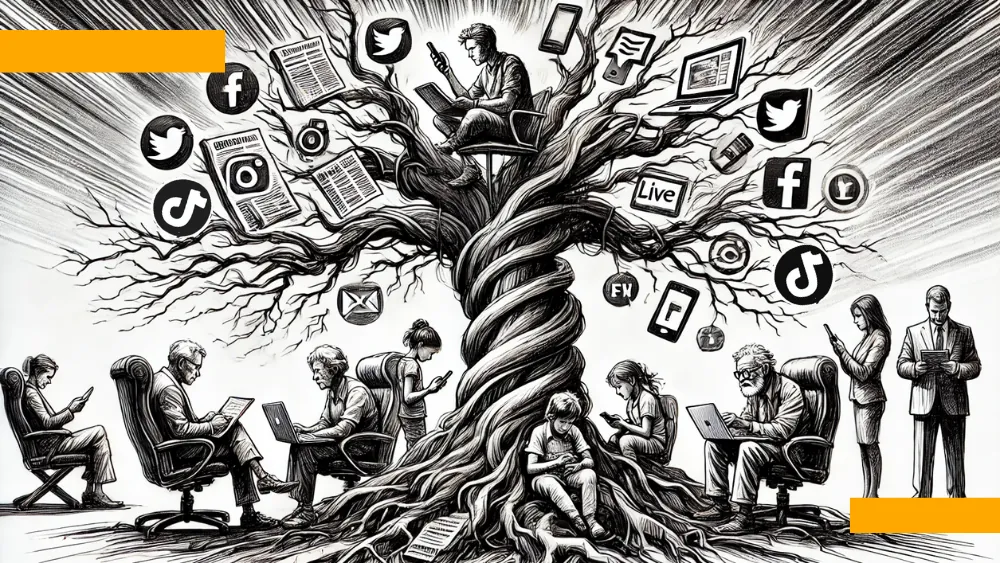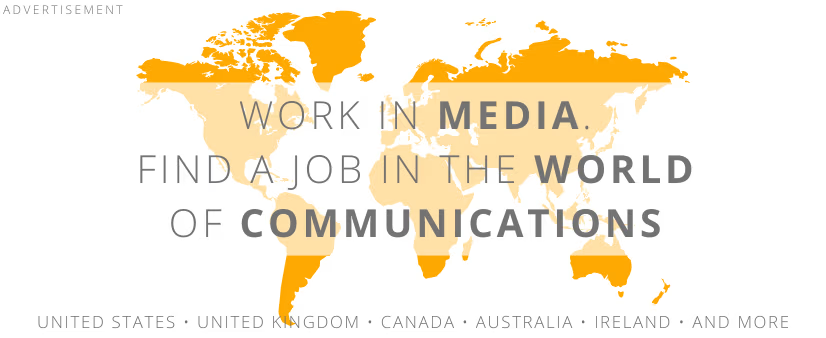 illustration: DALL-E
illustration: DALL-EIn a trust survey of social media platforms conducted in Poland by the Institute for Market and Social Research IBRiS for the Res Futura Analytical Collective and SentiOne, Poles rated which social platforms they trust and which they do not. YouTube received the most positive responses. Nearly one in four respondents expressed trust, including 6 percent who said "definitely." Distrust in the platform was declared by 20 percent, while 42 percent were neutral. Only 3 percent of those surveyed did not know this platform.
On the other end of the scale was TikTok. Nearly one third of respondents said they did not trust it. Only 13 percent expressed trust, with no one selecting "definitely trust". A significant 16 percent had never heard of the app.
Facebook landed close to TikTok. Three out of ten respondents did not trust the platform. 22 percent expressed trust, and 31 percent were neutral. High neutrality levels were also seen with Instagram. As much as 36 percent chose that option. Only 11 percent declared trust, while 20 percent expressed distrust.
Platform X (formerly Twitter) received similar ratings. 20 percent trusted it and 21 percent did not. The rebranding may have impacted recognition. As many as 26 percent of respondents did not know the new name. The least recognized service turned out to be Telegram. 58 percent did not know the app. Only 4 percent declared trust and 11 percent distrust.
| Platform | Trust (%) | Distrust (%) | Neutral (%) | Don`t know (%) |
|---|---|---|---|---|
| YouTube | 23 | 20 | 42 | 3 |
| 22 | 31 | 31 | 5 | |
| X (Twitter) | 20 | 21 | 24 | 26 |
| TikTok | 13 | 32 | 28 | 16 |
| 11 | 20 | 36 | 19 | |
| Telegram | 4 | 11 | 15 | 58 |
Based on data from the trust in social platforms study by Res Futura, IBRiS, and SentiOne, several clear conclusions emerge. The findings form a bigger picture. Society is becoming more cautious about social media and real trust goes only to platforms that are neutral, functional, and easy to understand for a broad audience. A deeper understanding comes from comparing with other media studies. Both social and traditional.
Trust is leaving platforms but not people
According to the European Broadcasting Union (EBU), as many as 49 percent of Europeans trust public media. In comparison, only 17 percent trust social media. This shows that on a continental scale, platforms like Facebook or TikTok have not earned the status of trusted information sources.
In Poland, these ratios are even more stark. According to the Reuters Digital News Report 2024, only 33 percent of Poles believe most online news is true. That is among the lowest in Europe. Low content credibility translates into distrust toward the channels that distribute it. Mainly social media.
Interestingly, even younger users who actively use TikTok or Instagram say they approach content there with great caution. Manipulation, disinformation, and sponsored posts pretending to be real are widespread. This undermines the credibility of entire platforms regardless of individual experiences.
People more than platforms
An additional insight comes from an analysis of user attitudes toward influencer marketing. Users trust specific people more than entire platforms. As many as 63 percent said they trust influencers who communicate sincerely and personally. This shows that the source of trust today is not the brand but the person.
Social media platforms are no longer seen as neutral communication tools. Users expect authenticity, engagement, and consistency. Not only from the content but also from the creators. That is why YouTube, seen more as a tool than a media outlet, ranks best. Meanwhile, TikTok and Facebook are paying the price for scandals, disinformation, and overreliance on algorithms. It is increasingly clear that trust is not disappearing. It is simply changing its target.
COMMERCIAL BREAK
New articles in section Media industry
Advertising market 2025. Poland, Europe and the World
Marcin Grządka
The global advertising market is growing by 8.8% in 2025 and will reach a value of 1.14 trillion dollars. The industry result in Europe records slightly lower dynamics, at the level of 5.8%. In this comparison, Poland performs clearly above the average. We will record an increase of 8.9% this year and a value of 18.56 billion PLN - estimates WPP Media in the annual report "This Year Next Year".
The print media market 2025. Three global trends
Krzysztof Fiedorek
The market value is 359.53 billion dollars, yet the erosion is visible to the naked eye. The decline for newspapers will amount to -2.3 percent. Despite this, print retains strength: it generates 76 percent of subscription revenues and enjoys 82 percent consumer trust. The future of the industry is defined by hybrid strategies and niche specialization.
Journalism in the age of AI. Why people prefer humans over machines
Krzysztof Fiedorek
Only 12% of people accept news created solely by AI, while 62% prefer those written by humans. At the same time, only 19% notice labels indicating the use of artificial intelligence, while younger audiences ask AI to explain the content to them. These are the findings of the Reuters Institute report on artificial intelligence in media.
See articles on a similar topic:
The Podcast Market in Poland. Research by Wprost and Tandem Media
Krzysztof Fiedorek
How many Polish internet users listen to podcasts? Where and how do we listen? How and why do we choose episodes? Two major studies on this topic were recently released. One by Wprost, the other by Tandem Media from Agora Radio Group. We present both for data comparison and insights.
Radio in Europe. How Are Listener Habits Changing?
KFi
Radio remains one of the most popular media in Europe, but data from the European Broadcasting Union's report "Audience Trends: Radio 2024" shows clear changes in listener habits. The average European spent 2 hours and 13 minutes per day listening to the radio in 2023. This is 18 minutes less than five years ago but only one minute less than the previous year.
COVID-Skeptics in Media. Dentsu Agency Study
BARD
A significant presence of COVID-skepticism, which downplays the pandemic or focuses on conspiracy theories, accounts for approximately 8% of online content related to the coronavirus. The primary sources of knowledge about COVID-19 and the current situation are the internet, social media, television, and increasingly, family and friends.
Disinformation and Fake News. Experts Discuss Challenges for Journalists
RINF
The pandemic, followed by the war in Ukraine, triggered a massive wave of disinformation in media and social channels. Experts at the Impact’22 Congress in Poznań and the European Economic Congress in Katowice discussed effective strategies to combat disinformation.





























